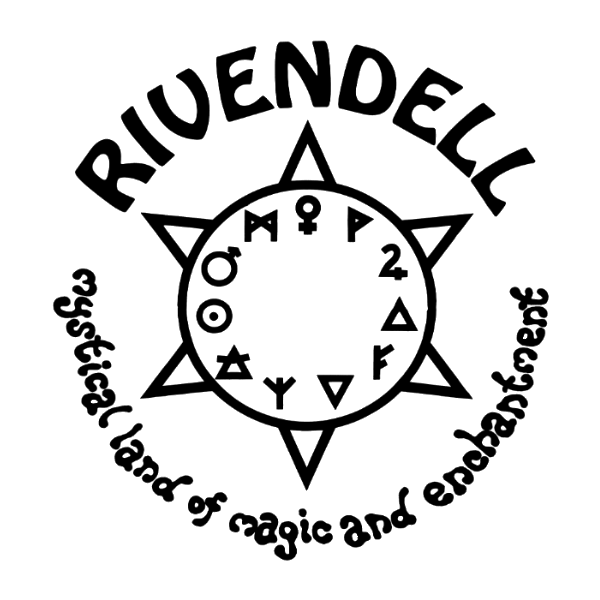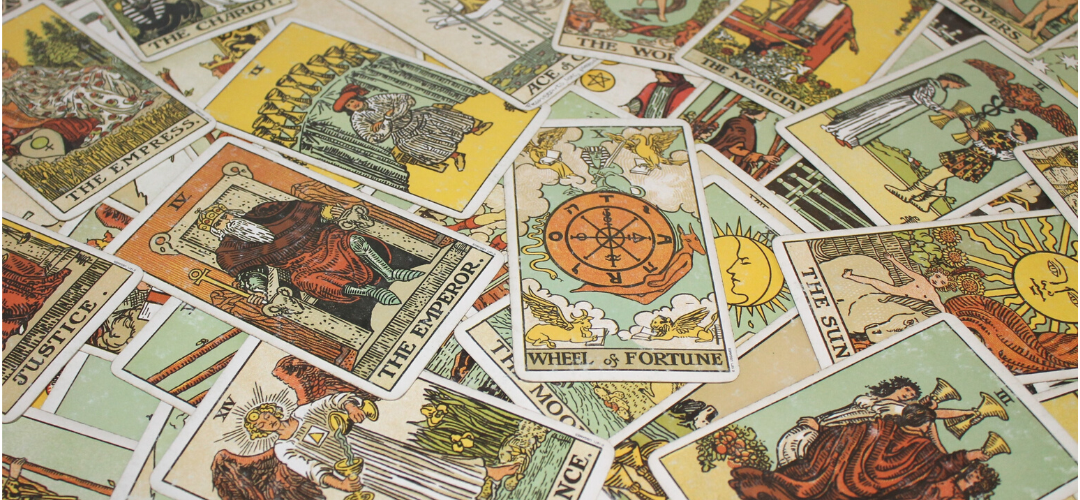If you've ever stumbled upon a tarot card reading or have been curious about what it entails, you may have some questions about what tarot is and how you can get started with it. Tarot is a centuries-old practice that provides insight into one's past, present, and future using a deck of cards with various symbols and images to read their energy and offer guidance.
So, what exactly is a Tarot?
A tarot is a form of divination that involves using a deck of cards to gain insight into a person's life and the situations that surround them. Each card has a unique meaning and symbol. When drawn in a particular sequence, they create a story that can help people understand their current situation, past experiences, and the potential outcomes of their future decisions.
The tarot deck is composed of 78 cards, each with its unique imagery and symbolism, which is divided into two categories: the Major Arcana (22 cards) and the Minor Arcana (56 cards). While this provides a brief overview, you can get more in-depth knowledge of each card in the 78-card tarot deck by referring to our comprehensive guide:
Major Arcana
The Major Arcana, sometimes called the Trump cards, comprises 21 numbered cards and one unnumbered card called the Fool, who plays a crucial role in the Major Arcana. The Fool's Journey involves moving through each card and learning valuable lessons along the way.
A Major Arcana card is typically intricate and meaningful, and its presence can impact the entire reading. It often serves as a cue to contemplate broader lessons and themes in your life.
Minor Arcana
The 56 Minor Arcana cards pertain to the particular and immediate challenges we face in our day-to-day lives. They symbolize our thoughts, emotions, experiences, and beliefs, and reflect the transient energies that influence our lives. The Minor Arcana comprises four suits that represent different aspects of our lives:
- Wands, which are associated with the fire element, symbolize passion, energy, creativity, and sexuality.
- Cups, associated with the water element, represent emotions, feelings, and intuition, making them the suit of love.
- Swords are related to the air element and represent our thoughts, words, and actions. They are intellectually driven.
- Pentacles, related to the earth element, provide guidance on our finances, career paths, and material possessions, recognizing the material world.
Getting Started with Tarot
If you're interested in learning more about tarot and want to start practising, there are a few steps you can take:
1. Get a Tarot Deck
There are countless tarot decks available on the market, so choosing one that speaks to you is essential. Look for a deck with imagery and symbolism that resonates with you and that you find visually appealing. But not all decks are created equal.
To know you're getting the real deal, go for the Rider-Waite deck. The Rider-Waite deck is considered the top choice for fully illustrated decks that contain a wealth of helpful imagery.
For those new to tarot, it's important to note that our expert advises avoiding decks that have a particularly negative or ominous appearance. It's best to steer clear of unillustrated decks or those that feature frightening images, as these may not be particularly inspiring.
2. Start Practising
Once you've obtained a tarot deck and guidebook, the initial step is to familiarize yourself with the cards. Building a connection with the deck is crucial, as memorising the meanings of 78 unique cards can seem daunting. A helpful starting point for beginners is to practice a daily card pull, where you draw one card from the deck and contemplate its significance. This exercise can be done independently, allowing one to understand the cards more intimately. You can carry the card's message throughout the day if conducted in the morning. This is an excellent method to better understand the tarot deck.
Most tarot decks come with a guidebook explaining each card's meanings and how to read them. If you're new to tarot and in need of guidance, this is an excellent starting point.
3. Trust your Intuition
Tarot is all about tapping into your intuition and using the cards as a tool to access your inner wisdom. As you continue practising, have faith in your instincts and don't hesitate to explore and attempt different approaches.
If you find learning tarot daunting, remaining calm and trusting your abilities is crucial. Rather than viewing tarot as a mysterious system that requires extensive study, try to approach it with the mindset that you already possess the knowledge and language needed to understand it. The key is to make connections between the cards and articulate their meanings in your own words. For example, the four elements of earth, water, fire, and air are fundamental components of tarot, and most people already have some understanding of their significance. Drawing on this knowledge can help you develop your perspective on tarot and allow you to express your ideas more freely.
Consequently, tarot readers must possess strong communication skills, including an open-minded approach and a reliance on intuition. Intuition is a crucial aspect of tarot readings as it enables readers to detect the energy of others, including their emotions, thoughts, and experiences. This is what makes tarot such a remarkable tool for facilitating meaningful conversations.
4. Connect with other Tarot Enthusiasts

Joining a tarot community or finding a mentor can be a great way to learn more about tarot and get feedback on your readings. Many online communities and social media groups are dedicated to tarot, and you can also find local groups or classes in your area.
How to Get Started with Tarot Reading

Mastering the meanings of each tarot card is only the beginning. The real magic of tarot lies in using the cards to connect with your intuition and inner wisdom, enabling you to take positive steps towards a brighter future. Start by selecting a tarot deck and ensuring it's energetically cleansed. Then, you can follow a simple format for tarot readings:
1. Start by asking your deck a question
The question should be phrased in a way that is open-ended and clear. For instance, it's best to avoid questions that start with "Will I..." because they may limit you to a passive role in shaping your future. The aim is to use the tarot reading to shed light on a path ahead, so the tarot reader should ask questions that are more general. Here are a few approaches to consider if you're new to tarot:
"How can I gain clarity on?"
"Where should I focus for potential growth?"
"What is important to prioritize in my relationship?"
2. Your next step is to shuffle the cards
There are various methods to shuffle tarot cards. One way is the overhand shuffle, where you hold the deck of cards in one hand and move the cards from one side to the other with the other hand.
Another method is to "cut" the deck by dividing it into piles and then combining them into one again.
You could also spread the cards facedown on the table and then sweep them into a disordered pile before tapping them into place once more.
It's not about being right or wrong, as different people may prefer different techniques. Experiment with each one and go with what feels most comfortable to you.
3. Pull your card(s)
There are various ways to draw a card as well. One way is to cut the deck with your left hand and take the card on top. Alternatively, you can slightly tilt the deck in your left hand to reveal a gap, then select the top card from there.
Another way is to fan the cards out like a deck of cards, and pick the card that catches your attention or feels right in your hand.
It's up to you whether to draw a single card for a simple reading or multiple cards for a spread. Tarot spreads offer a broader view of your situation or life path rather than answering a single question. The more cards you use in a spread, the more detailed the reading can be, but for beginners, a large spread can be overwhelming.
4. Place them with the face down in the pattern of your spread
Next, flip the cards over to reveal their symbols, imagery, and meanings. Take your time to observe and reflect on what the cards are telling you, paying attention to any thoughts or feelings that come up as you go along.
How to Interpret the Cards
Tarot Card Spread for Beginners
Three-card Spread for Grounding

Once you have shuffled the cards, select three cards from the stack. As you reveal each card, reflect on how it pertains to the following aspects. Keep in mind to take it slow and steady breaths, and trust your intuition throughout the process.
- 1st card: signifies the actions you can take to embrace the changes in your life.
- 2nd card: provides guidance on how to take care of yourself during this process.
- 3rd card: serves as a centering tool to help you navigate through the change. Remember to breathe slowly and tap into your intuition as you turn over each card.
Five-card Spread for Clarity

- 1st Card: What is currently happening in my life?
- 2nd Card: How can I navigate this situation with ease and grace?
- 3rd Card: What lesson can I learn from this experience?
- 4th Card: What do I need to release or let go of at this time?
- 5th Card: What new opportunity or energy is entering my life?
What are the Major Cards?
Becoming intimately familiar with a deck of 78 cards can take years, so for our beginner purposes, we're going to take a look at some of the Major Arcana cards that can reveal the most about our lives: the High Priestess, the Lovers, the Hermit, Death and Judgement. Here's what each one means when flipped upright and reversed.
THE HIGH PRIESTESS

She's pictured sitting on a throne, with a veil draped behind her. This represents a division between the mind's conscious and subconscious. The division is representative of two opinions or sides to every matter (whether that's masculine and feminine, dark and light, etc.).
THE LOVERS

A couple that looks similar to Adam and Eve gaze at the sky, but instead of the wrath we know the biblical duo faced after giving into temptation, this pair is being physically and emotionally healed.
THE HERMIT

No, this picture isn't of you staying in on Saturday night. Instead, the Hermit stands atop a mountain (a symbol of accomplishment). He went on a journey to get there and has been rewarded with knowledge and heightened awareness.
DEATH

Nope, pulling the Death card doesn't mean you'll die. Instead, the messenger of death on the card reminds us that none of us can dodge him forever. People who pull this card might be dealing with grief, going through a huge change or coming to the beginning or end of something significant.
JUDGEMENT

We're not here to judge you, and neither is this card. The Judgement card shows people reaching toward the heavens, illustrating the ultimate reckoning we'll all face one day, but pulling this card means something about how you're currently feeling about yourself.
Final Words
Tarot is an effective means of self-discovery and gaining insight into life's ups and downs. Although it may seem daunting initially, with practice and direction, everyone can master the art of tarot card reading and harness their intuition. So, why not take a chance and see what knowledge the cards hold?






